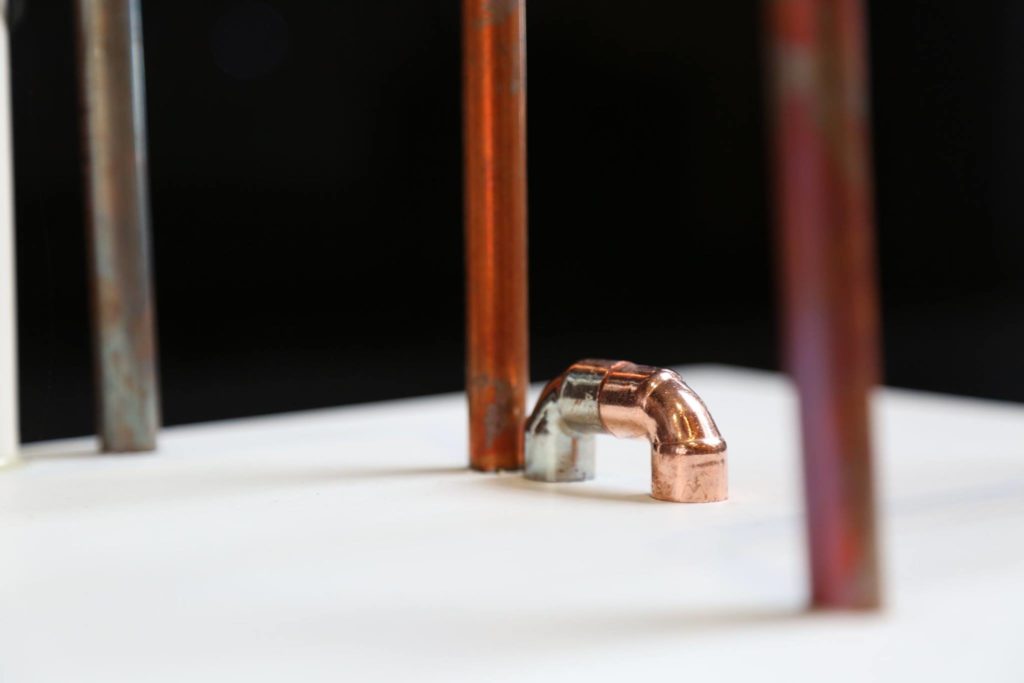In mid 2016 I embarked on a three month residency at the EcoSciences Precinct in Brisbane, Australia (that houses the Commonwealth Scientific and Industrial Research Organisation, or CSIRO), working directly with the Department of Science, Information Technology and Innovation, or DSITI.
While this residency did not come with a budget, I experimented with creating three works during this time that involved information that I had gathered from the scientists of DSITI and their research, using my own equipment. I particularly wanted to experiment with small scale projection mapping onto sculpture, and holographic projections. My final three pieces were displayed as part of an exhibition that also involved a range of other leading national SciArtists, and one of the pieces was eventually acquired by the EcoSciences Precinct for display in their library.
Glas blong huriken (the glass that belongs to the hurricane). Projection onto holographic scrim and glass. Mixed media sculpture.
Glas blong huriken attempts to digitally create a sci-fi-esque ‘weather lab’ where different types of weather are grown. Focusing particularly on clouds, each glass holds a faux holographic display inside it – a storm cloud, a tornado, and lightning, are being grown. A small figure sits on each glass, painted dark green: the toy soldiers of the weather army, each holding a fantasy hand-held version of a cloud cannon, including the one now stationed at Charleville, Australia. Weather modification of any sort is a concept that sits uneasily with me, particularly due to the seemingly violent ways in which it occurs. The weather plays a vital role in climate change, indeed it is our climate, and it is something that affects us as humans directly through our bodies and senses, as well as emotionally. We belong to the weather, but it should not belong to us.
These light bulb glasses are around actual size, so this is an experiment in projecting the very very small in a holographic environment. It is work getting up close to this piece in order to explore these miniature worlds!
The title comes from the Pidgin English word for ‘barometer’ – the glass of the hurricane.
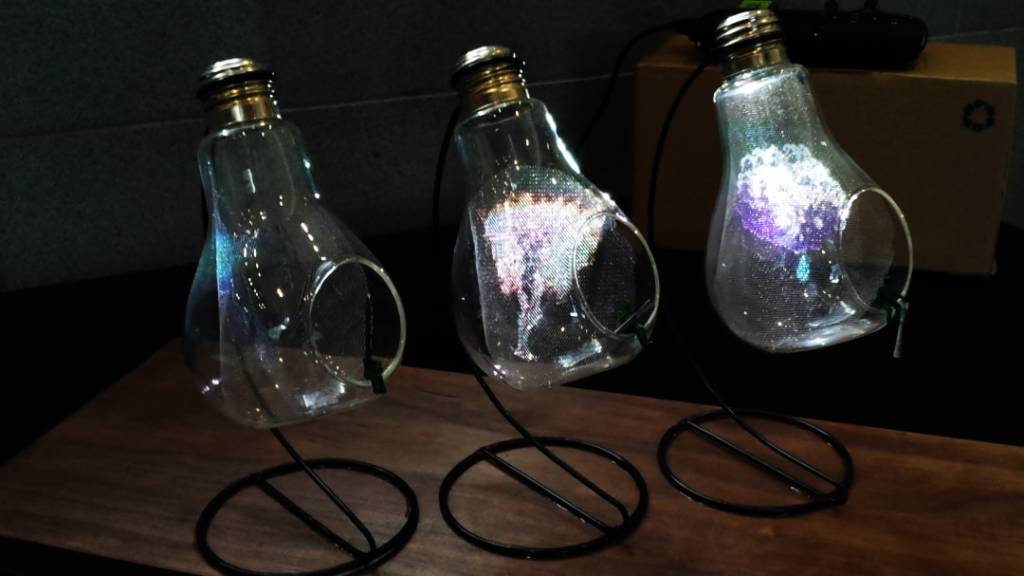
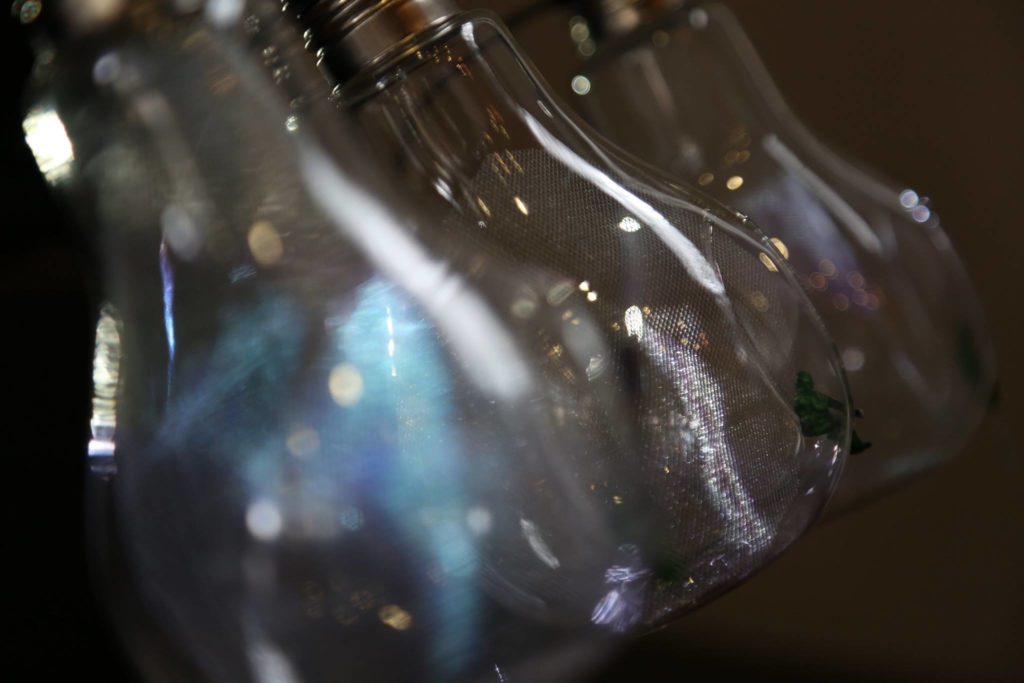
A Long, Wired Paddock. Digital animation.
A Long, Wired Paddock is a digital animation of a 3D wireframe world that the camera ducks and weaves through. The walls of the ‘world’ are generated, and change with time, inspired by climate modelling data found in the DSITI library – the data ranges over each continent individually, from the 1950s to today. Warm earthy tones are stuck to throughout, and the wireframe appearance is reminiscent of the triangular shapes often seen in my projection mappings. The name of the piece is a direct play on the phrase ‘the long paddock’ – the name for a particular Australian stock route, and also a term used by Landscape Sciences at DSITI, who monitor the Australian rural climate.
This work was also shown in the exhibition ‘Digital Departures’ held at Caloundra Regional Art Gallery (2016), and was named favourite piece by gallery staff. It was also shown at Gold Coast’s ‘GLOW’ projection Festival (2016), and was featured in the Gold Coast Bulletin.
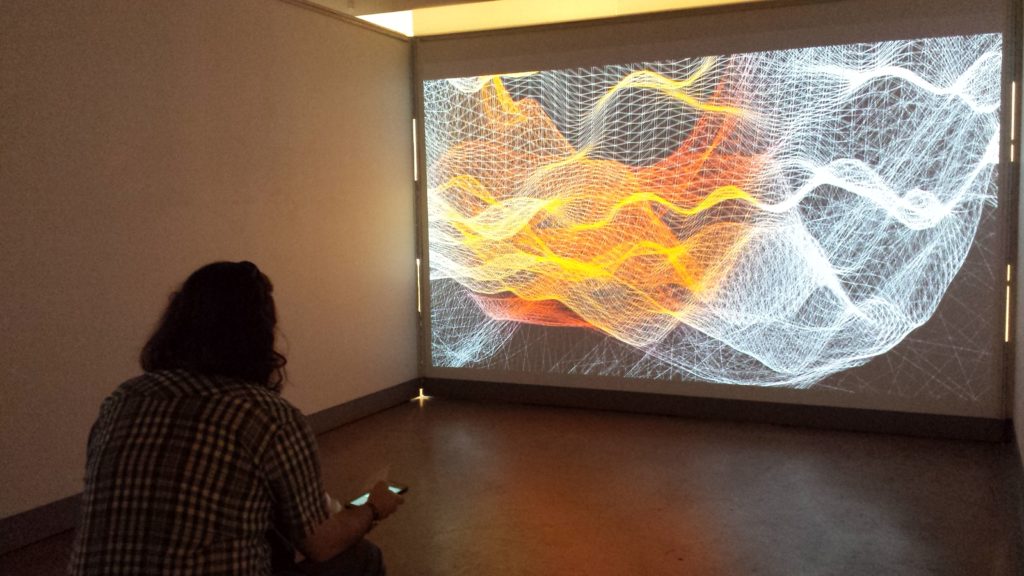
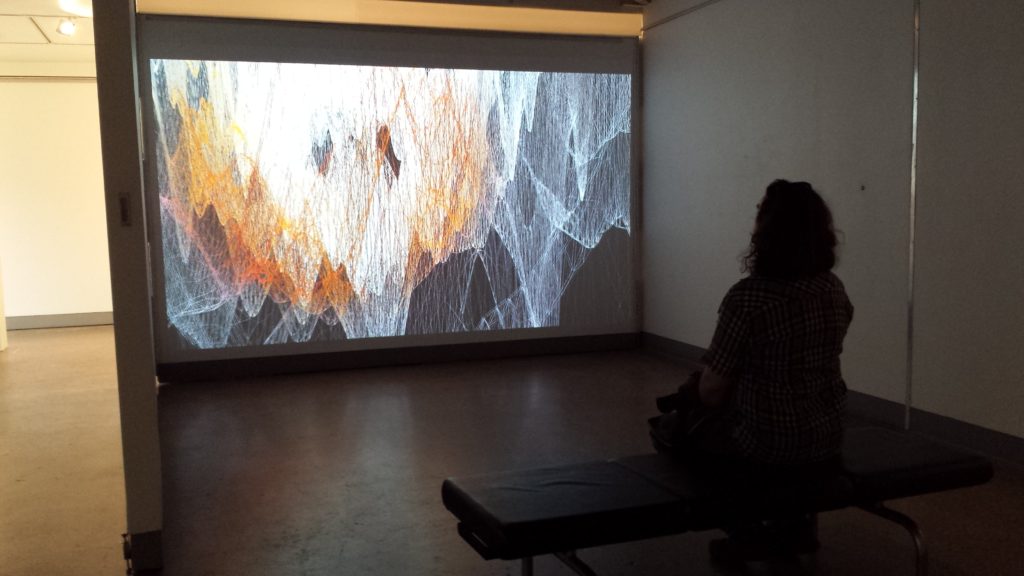
A Long, Wired Paddock at Caloundra Regional Art Gallery

A Long, Wired Paddock on-screen footage
Skae Pluma (sky plumber). Projection onto wood and copper.
Humans, as a somewhat viral species with a fast growing population, tend to create pollution wherever we go. It is only by focusing on sustainability and environmental monitoring that we have begun to reverse this act in Brisbane city and surrounds. In this artwork one sees the depiction of swimming human-faced creatures who reproduce every two seconds. As the population grows, so does the air pollution around them, and their oxygen level shrinks. If you watch closely over time, you will catch the faces contorting and gasping for air. As the life cycle continues, they eventually return to nothingness.
This artwork resulted from two separate encounters at the ESP; one with the chemistry sector, where I met with scientists involved in using paleoclimate methods to create a potential climate record for SE QLD by reading phytoplankton, and one with the air quality team who introduced me to the different ways they monitor climate and pollutants locally. This artwork uses influences from both these areas: Images of phytoplankton originally borrowed from the chemistry sector were used as image and movement guides for what became my mythical swimming human-faced creatures, and my research on air particulates using the air monitoring sector’s extensive online data, and in meetings, influenced the pollutant element of this work and thus the overall theme.
This piece was an experiment in projection but also in doing a little science of my own by learning how to create different coloured patinas on copper. For this I was inspired by the building of the EcoSciences Precinct itself with its maze of pipes within the bowels underneath. This piece, thus, projects straight downwards onto a faux white floor that has a maze of different coloured copper pipes bursting from it. The projection was made to be the exact same size as the faux floor.
I originally thought this may be my best piece but it turned out as my least favourite. I wanted to play more with the shadows created by the copper pipes, so that the projection would flow around the pipes of use them as platforms, but this didn’t eventuate. Maybe next time! I also would have liked to make this piece interactive – the visuals used were originally interactive, but I had to turn this into a video for logistical reasons as I was leaving the country before the end of the residency and wouldn’t be there to set it up myself.

Skae Pluma on-screen footage
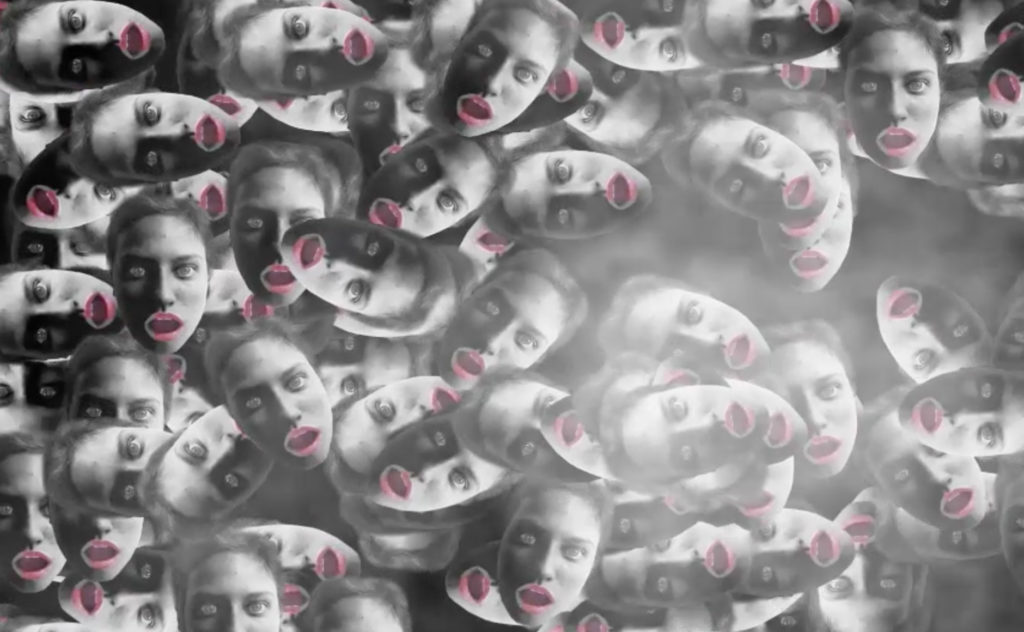
Skae pluma onscreen footage
